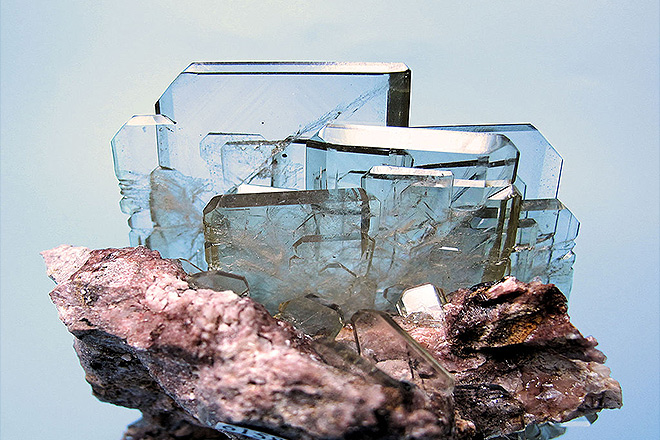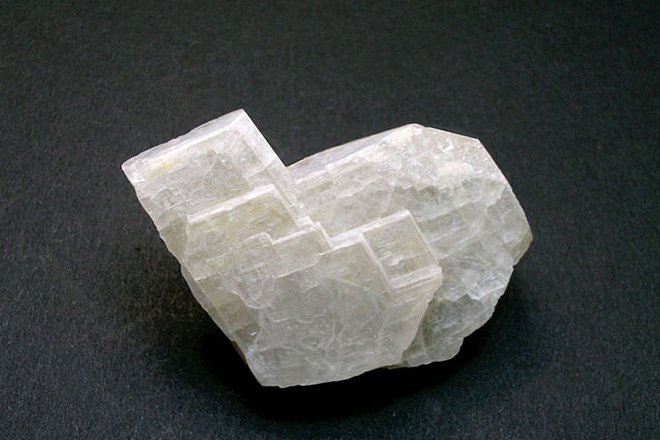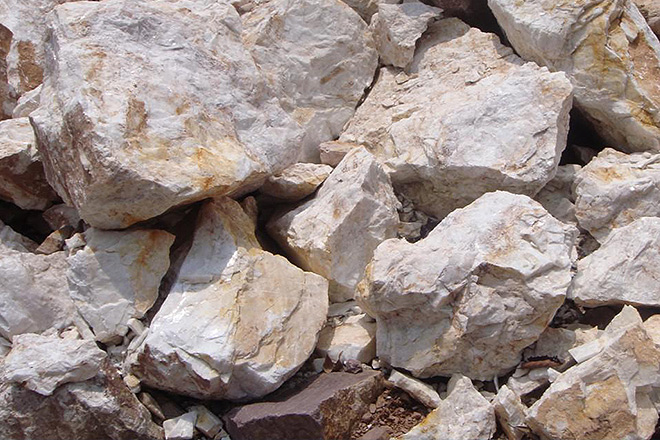Barite or baryte is a mineral containing barium sulfate. Its name is originally derived from the Greek word “barys” meaning “heavy”. This mineral belongs to the Barite Mineral Group along with anglesite, celestine and anhydrite. It has quite a beautiful appearance. This mineral ore is also known as Heavy Spar, Barytine, Schwerspath, Barytite and Baryte. It is the main source of barium. Aggregates of barite and sand is called rose rock which appears reddish in due to its iron content. It’s commonly known as barite rose.
Barite Mineral Ore Location and Mining :
It occurs in various depositional environments being deposited through a number of processes like hydrothermal, biogenic, and evaporation. Barite is commonly found in hot spring deposits and lead-zinc veins of limestone. It is frequently found along with hematite ore. This mineral has also been found in meteorites.
It is found in various regions of the US including Cheshire in Connecticut, De Kalb in New York, New Mexico, Tennessee, Georgia, North Carolina, Nevada, Virginia, Missouri, and Kentucky. Barite is found in Baia Sprie in Romania, Westmoreland, Cornwall, Cumberland, Derbyshire, Durham, Perthshire and Surrey in the UK and also in India, China, Peru, Canada, Morocco, Turkey, Ireland, Thailand, Iran, Greece and Brazil. It is found in Barberton Mountain Land in South Africa.
The leading Barite producing countries are (production in thousand tonnes, in 2010):
- China (3,600)
- India (1,000)
- United States (670)
- Morocco (460)
- Iran (250)
- Turkey (150)
- Kazakhstan (100)


